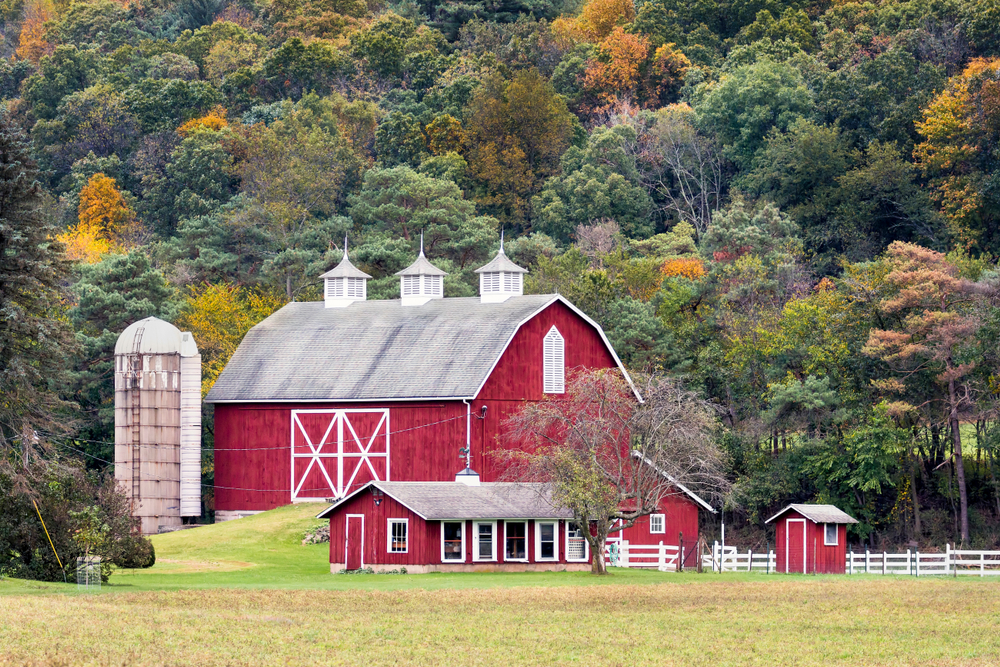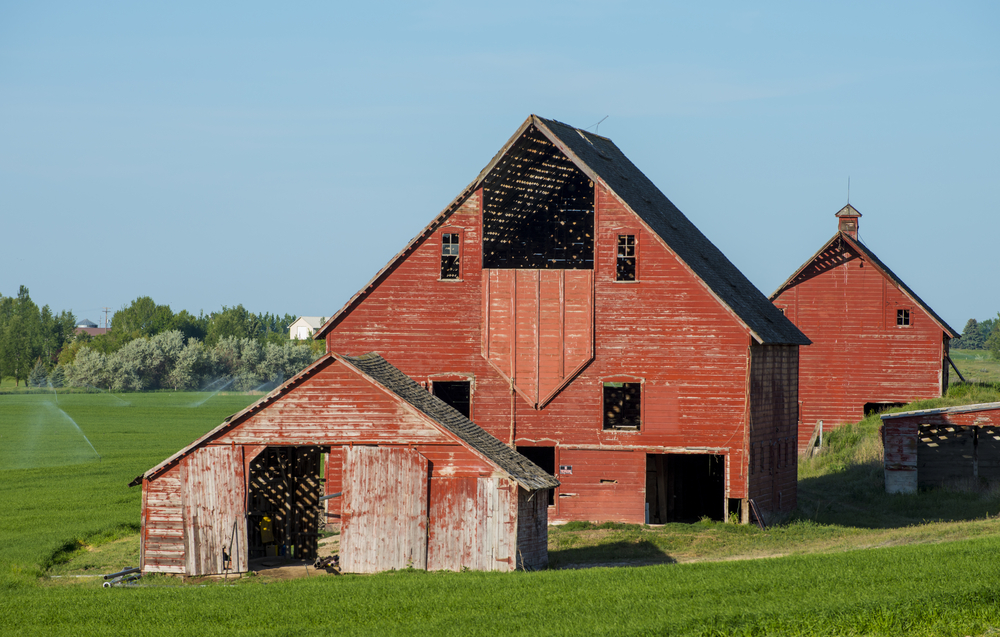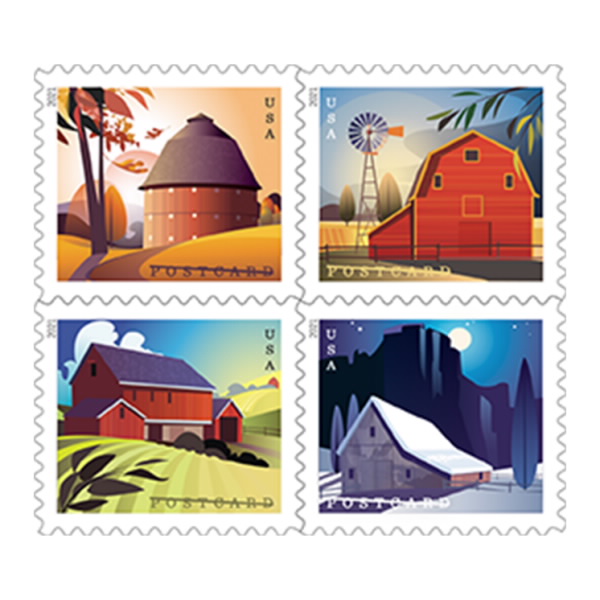It's aesthetically pleasing, yes, but there's a historic reason behind the crimson hue.

This article is republished from The Conversation under a Creative Commons license. Read the original article.
There are three reasons we see so many red American barns. It’s traditional, it’s practical and the color looks good.
Although a main reason to paint wooden buildings is for appearances, paint also protects the wood so it lasts longer.
During the 1700s and early 1800s, barns on family farms in the Northeast were typically covered with thick vertical boards. When they were left unpainted, the boards would slowly weather to a brownish-gray color.
But after the mid-1800s, to improve the efficiency of their barns by reducing drafts to help keep their animals more comfortable in winter, many farmers tightened up their barns by having wooden clapboards horizontally nailed on the outside barn walls. These clapboards were sawed quite thin, so painting them provided needed protection and dressed up the appearance of the barns.

Photo by Kent Weakley, Shutterstock.
In the 1800s it was common for people to make their own paints by mixing pigments with linseed oil made from flax seeds and other ingredients. Pigments are dry materials that add color. They were available in various hues, but the tint we see so often on older American barns was called Venetian red.
According to the 1884 edition of Everybody’s Paint Book, by F.B. Gardner, Venetian red was “suitable for any common work, or for brickwork and outbuildings.” This red pigment penetrated well into wooden barn boards and resisted fading when exposed to sunlight, so it could age gracefully for generations.
Venetian red got its name because historically this pigment was produced from natural clays found near Venice, Italy. The clays contained an iron oxide compound that produced this red color.
But as people found similar iron oxide deposits in many other places, “Venetian red” became a generic term for light red pigments that did not have any purplish tinge. By the 1920s, such “earth pigments” used to make red paints were being dug in Georgia, Pennsylvania, Virginia, Alabama, California, Iowa and Vermont.
By the late 1800s, in addition to red, it became fashionable to paint barns with other color schemes, especially those designed to complement the architectural styles and finishes of owners’ houses. These included various hues of yellows, greens and browns. Also, white paint commonly was applied to barns and houses.
But red paint remained popular on many farms because it was the most affordable. In 1922 the Sears, Roebuck catalogue offered red barn paint for just $1.43 per gallon, while other colors of house paints sold for at least $2.25 per gallon—nearly twice as much.

Image courtesy of USPS
Today, many modern barns don’t resemble classic versions. Very large barns that hold hundreds of cows or pigs look more like hangars or warehouses, and may be built of metal. But the tradition of painting smaller barns red continues—so strongly that the US Postal Service now celebrates them on postage stamps.
Thomas D. Visser, Professor of Historic Preservation, is the director of the graduate Historic Preservation Program in the Department of History at the University of Vermont.
Hey I m from a family of farmers
There is a church near me that was built in the early 1800s that has the three sides visible from the road painted white and the rear of the church not visible from the road is painted barn red.
This is such an interesting topic that many people don’t know about. I really enjoyed reading this article because it gave me more insight into how barns got their color and what was actually used to paint them in the first place.
Another reason red is popular over white for use in barns is the fact that in the early days if you painted your barn white you ran the risk of poisoning your livestock because early white paint contained lots of poisonous lead powder.
I’m Wisconsin…Completely ❄ America’s Dairyland ✌
Where were the red earth pigments dug in Vermont?
In Scandinavia, wooden houses have been painted red since 17 th century. It would be strange if that hasn’t influenced the red paint tradition in those parts of US where the establishment of farming had a large scandinavian origin.
The historical significance behind the iconic red barns in America is truly fascinating. The transition from weathered, unpainted barns to the widespread use of red paint during the 1800s, particularly with the introduction of wooden clapboards, not only served practical purposes but also contributed to the enduring aesthetic appeal of these structures.